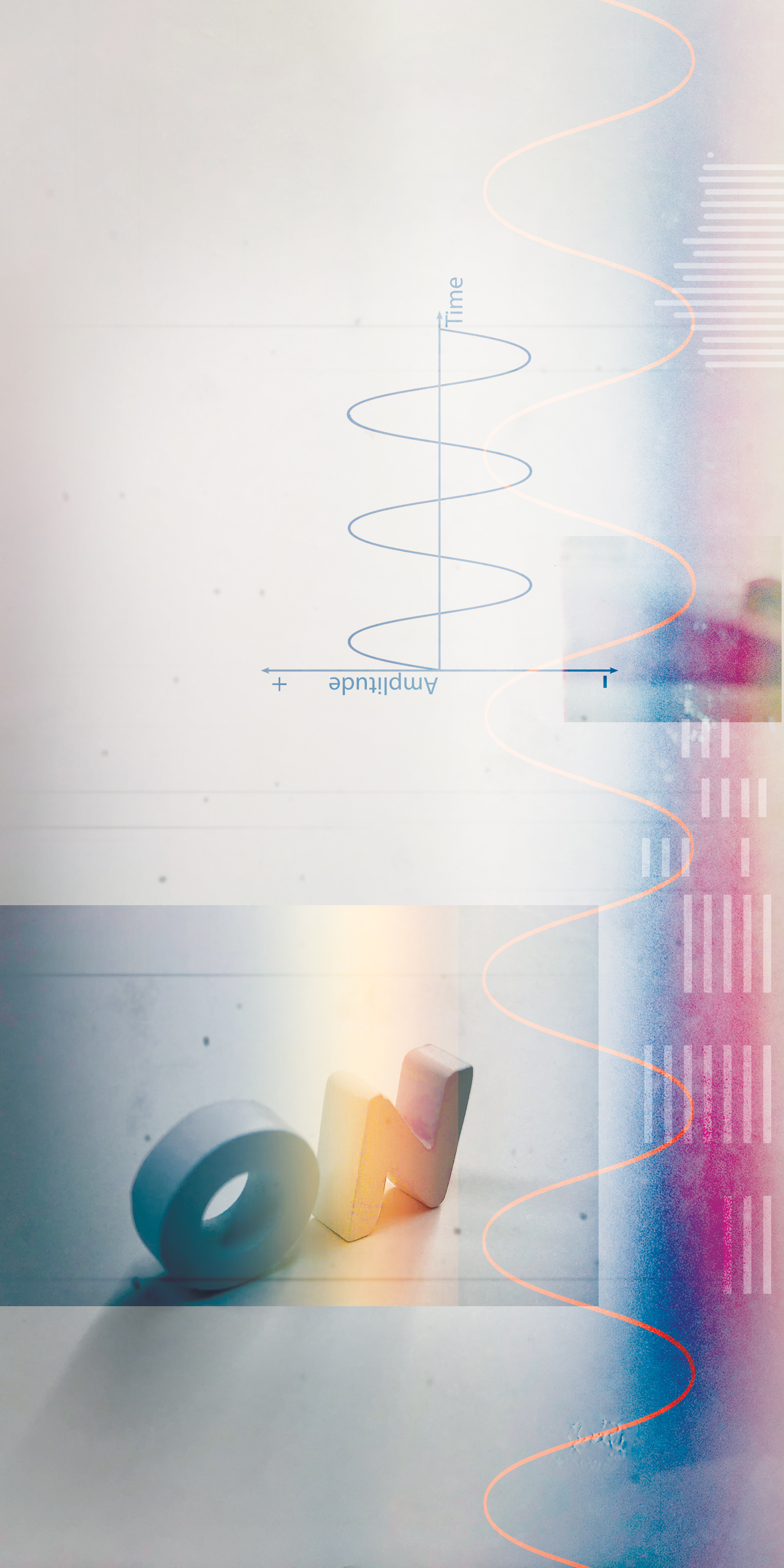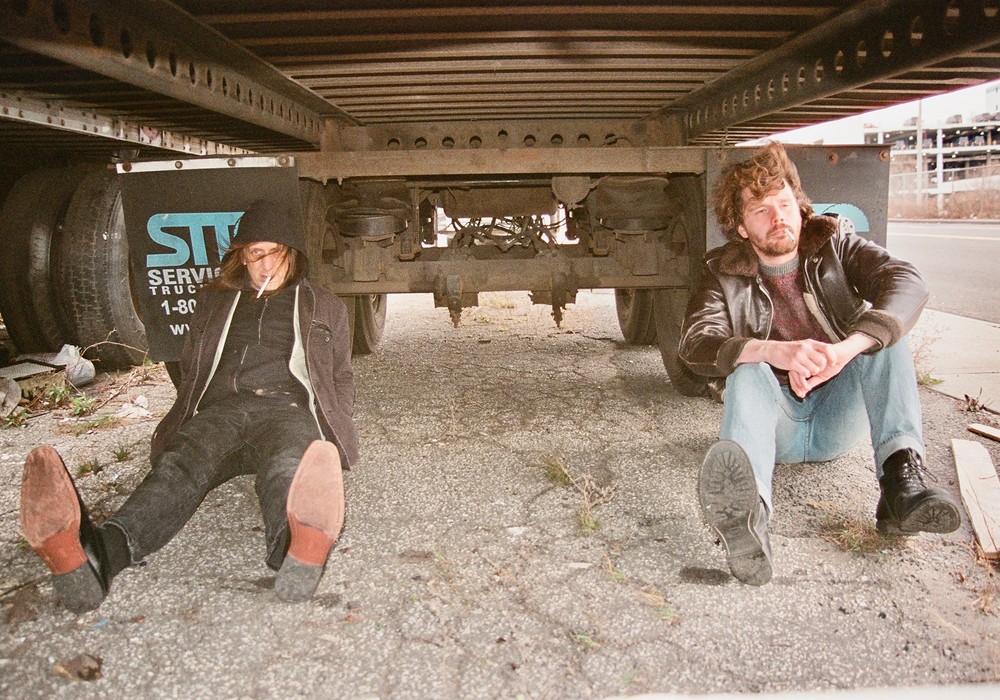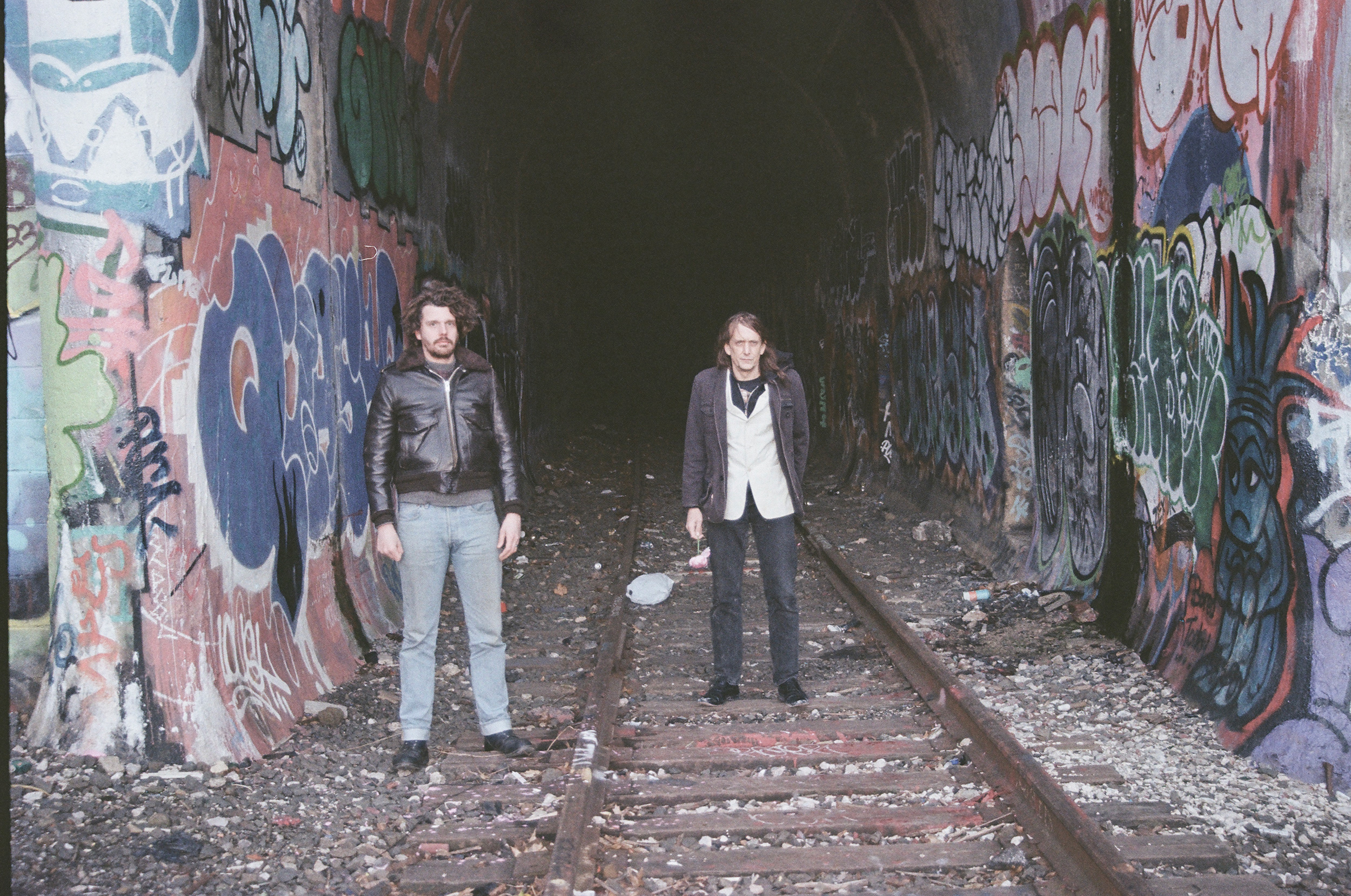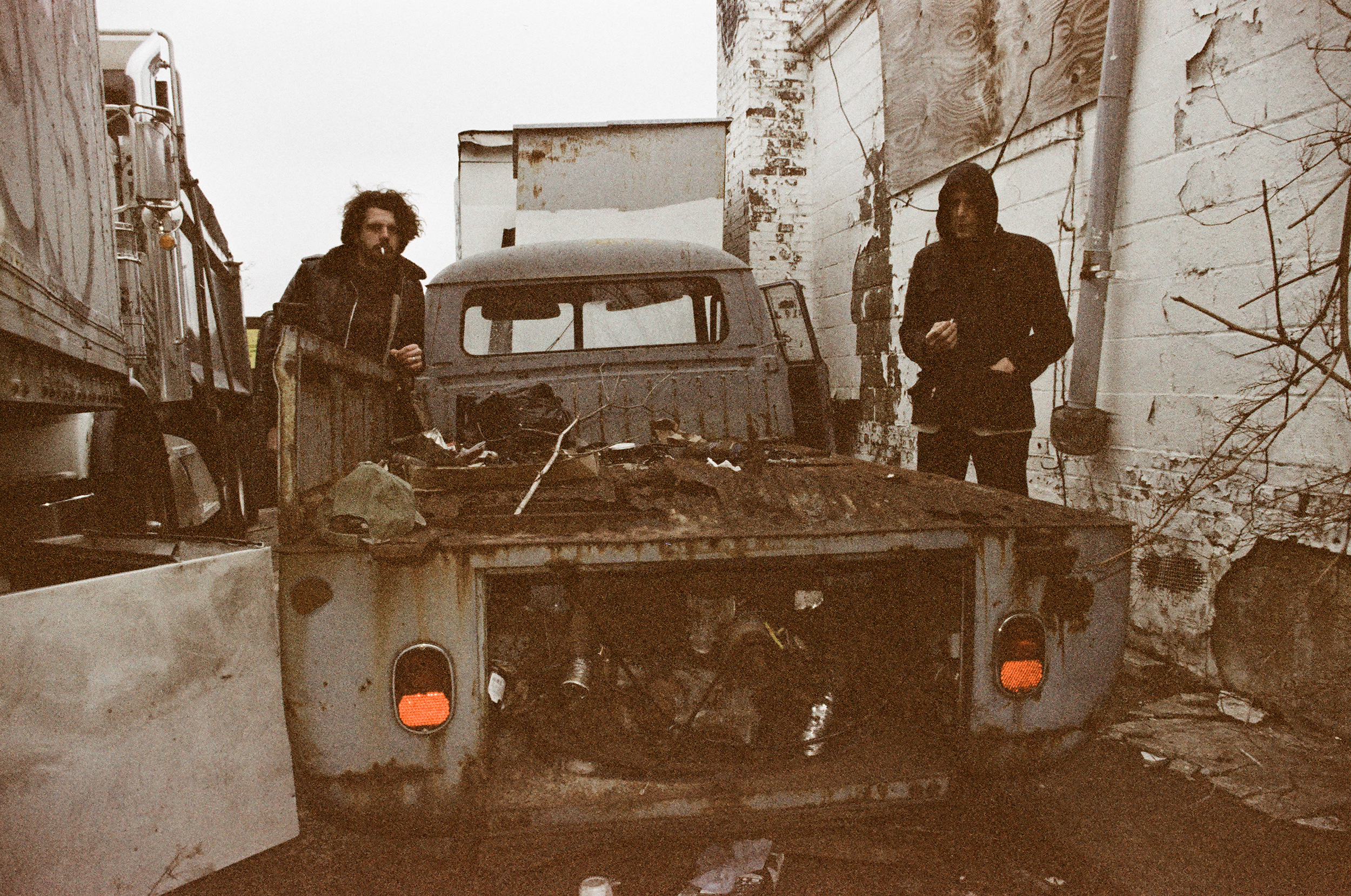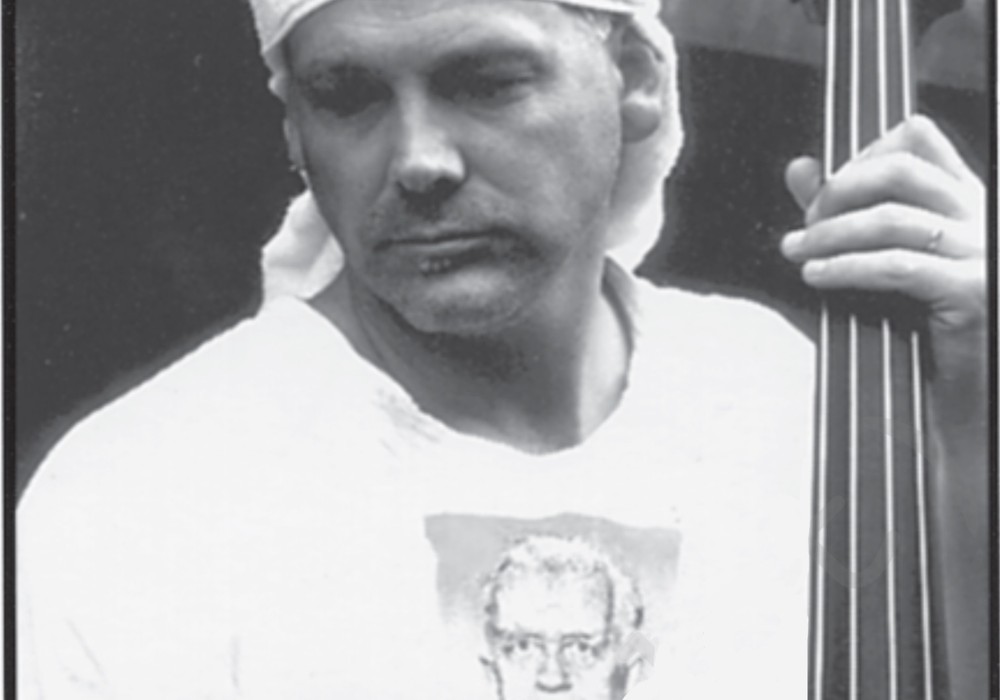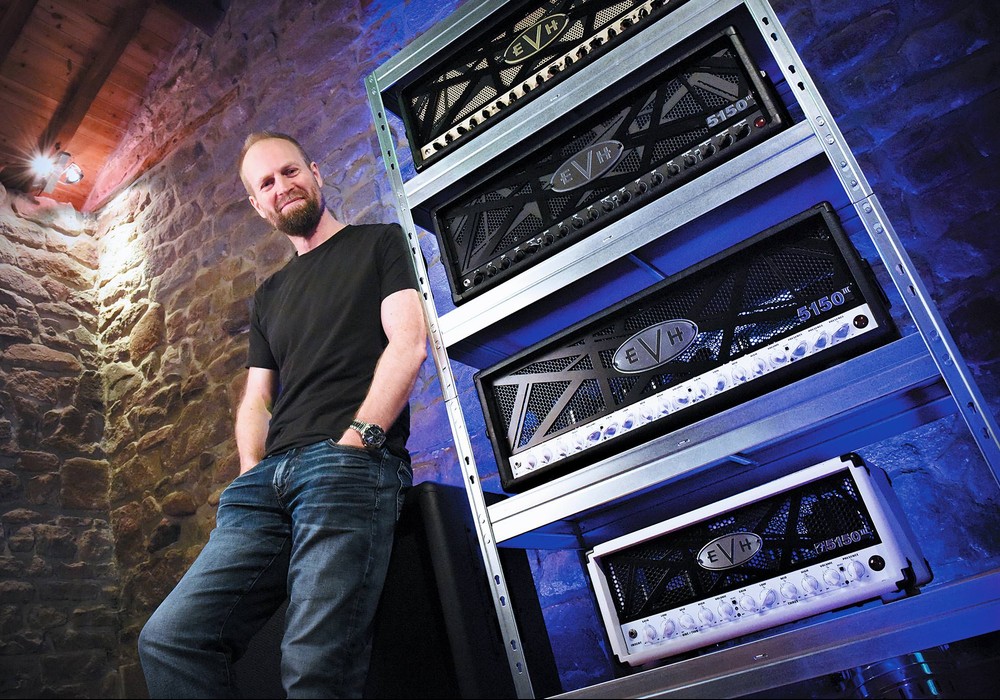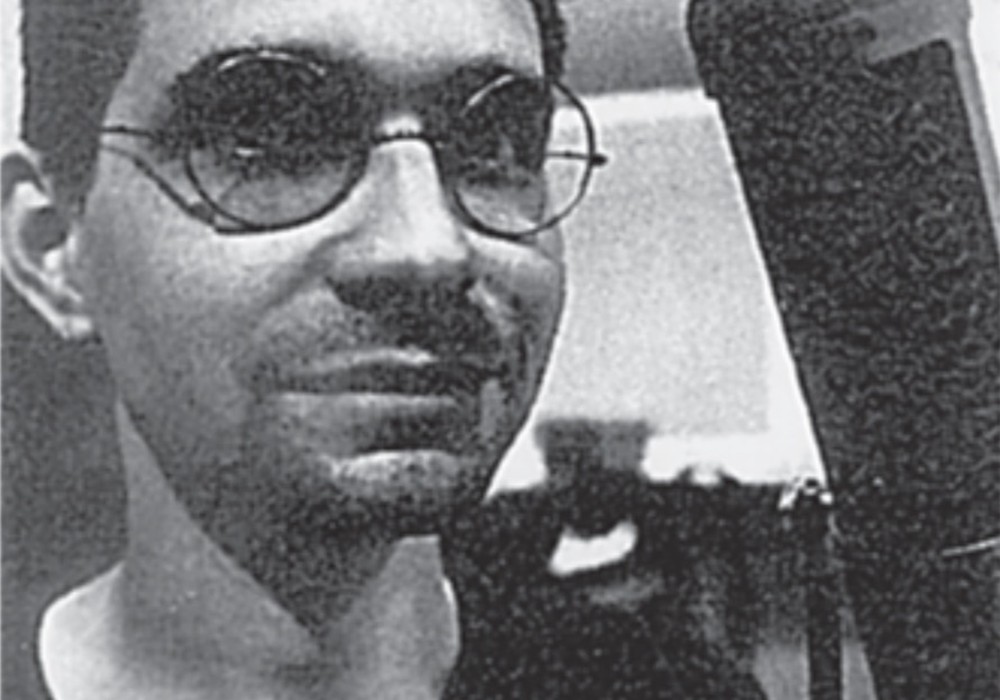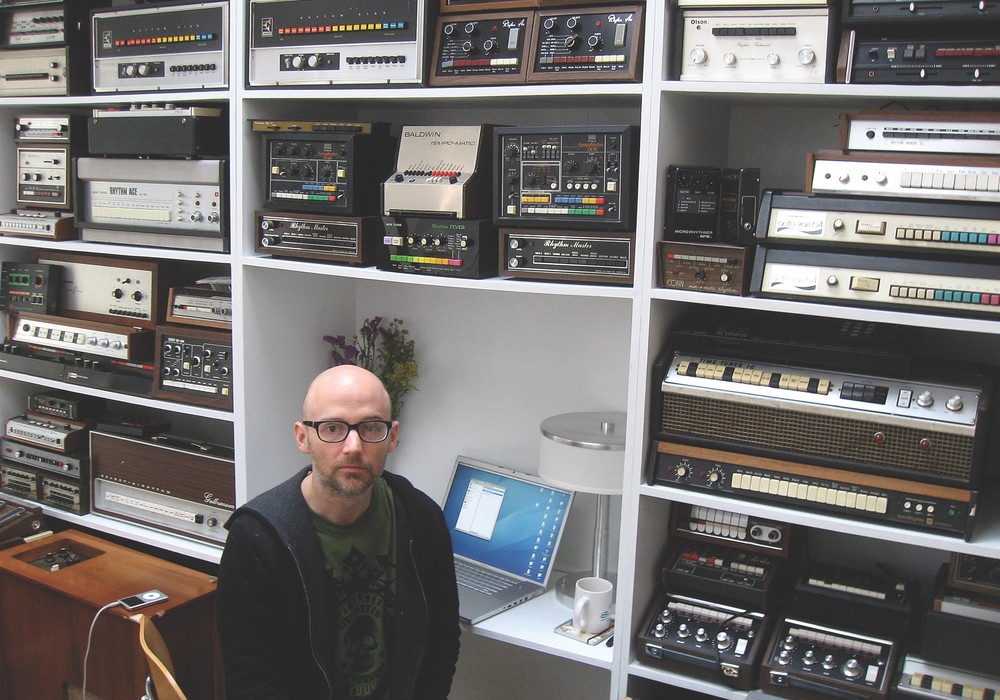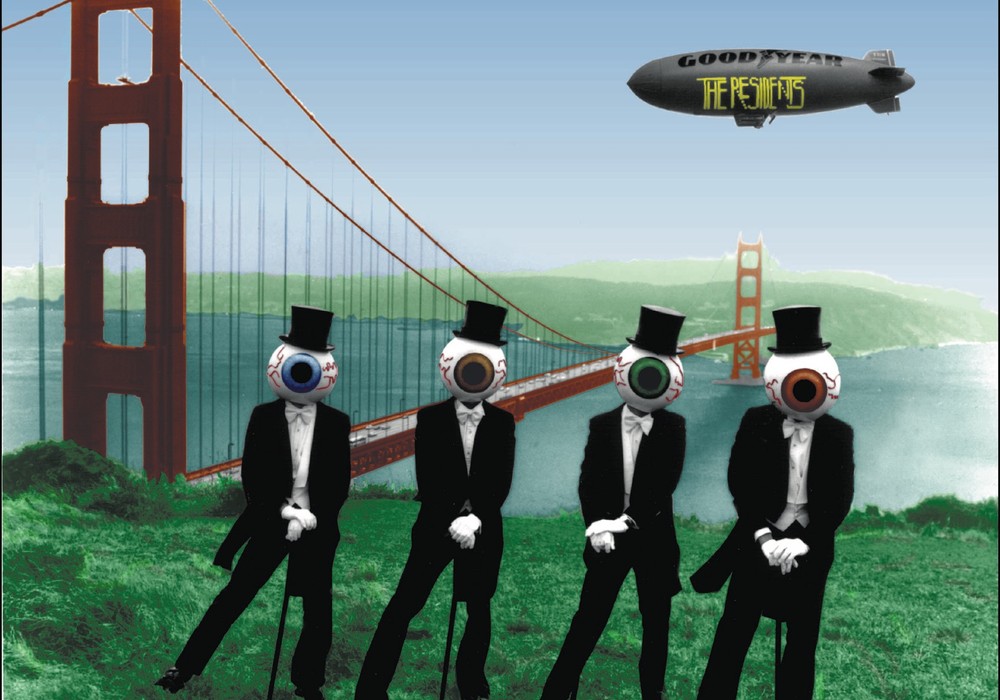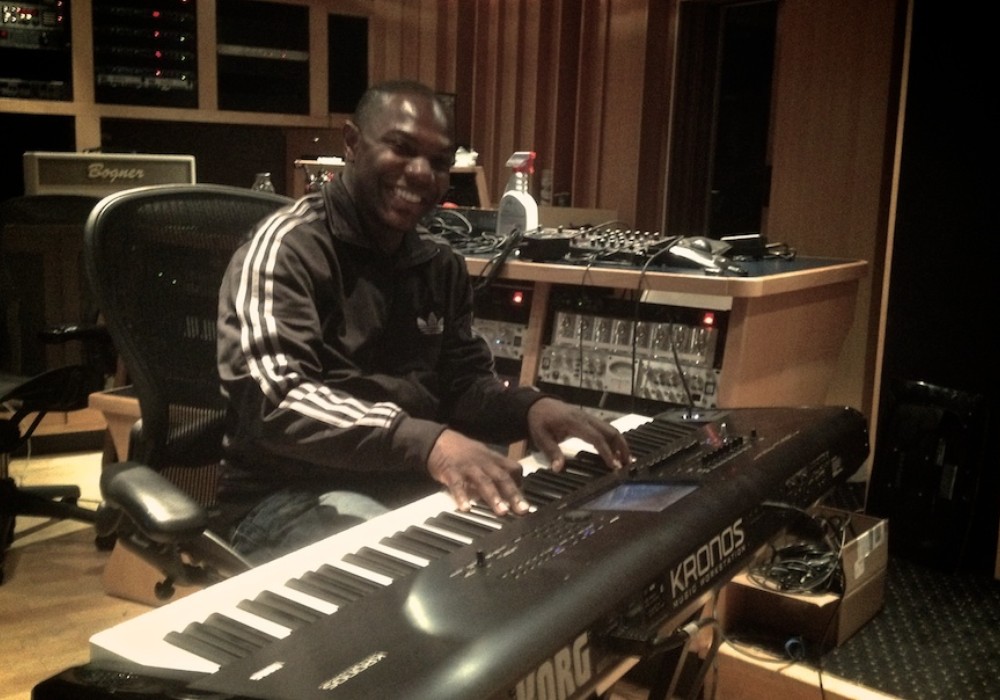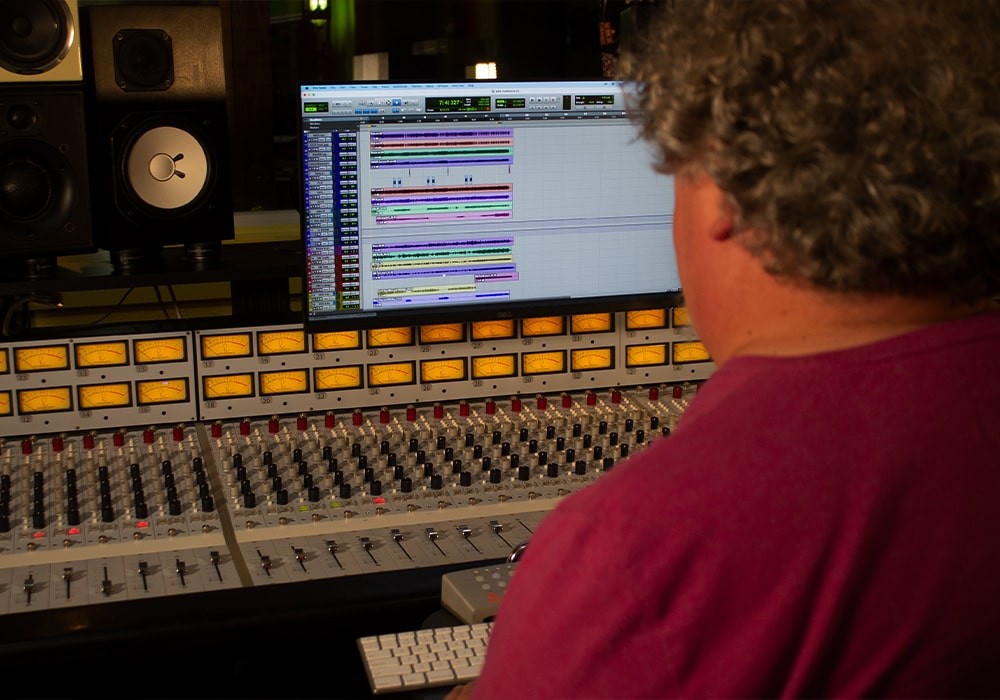Point of Memory's Void Pusher is self-described “acoustic computer music” from ambient’s nonconformer Jason Crumer, with help from frequent collaborator Tim Gick. Jason seems driven to keep pushing the limits of recorded sound. For more than 20 years his consistent output has ranged from the harsh sounds of his early work with Aluminum Noise, to a recent veristic avant-garde trilogy released under his own name (Jason Crumer, Services Rendered, Thin Ice). Jason embraces unique production techniques informed by trial and error, anxiety, analysis of the human condition, and struggles with sobriety. I caught up with the two over Zoom from their respective home studios.
Jason Crumer (left) and Tim Gick (right)
Tell me about this new project.
Jason Crumer: Point of Memory started out as just my project, where I wanted to stop using my own name and develop an entirely different style of working – or at least, a different style of recording – but still maintain high fidelity, and maybe make it a little bit more mysterious. That's how it started. When I went to S.A.N.S. [Strange And New Sounds] to track the very first parts, it wound up becoming something totally different. Ever since that first session, I had been looking for excuses to go back because it's a new, beautiful place. I decided I would return for each season of the year and try to catch myself in every mood that every season brings. After the first two or three sessions, I started realizing that I was having mixing problems – just theoretically – so, Tim [Gick]’s initial involvement was like a mix guide. He has a very good ear, especially for abstract stuff. He wound up helping a lot, in both mixing and setting the final sequence. I set a few rules, but he ultimately set the final sequence of the album.
How collaborative was the mixing process?
J: At the beginning, he was a second set of ears, mostly because he had attended the sessions. I was drinking then, and we would get hammered and party. He was the most knowledgeable on what I was trying to do. But he deserves the production credit he got. He did a ton of mixing. I don’t think there is a song that he did the final mix of, but at least five of the nine songs there are giant parts that he mixed, including key parts like the marimba. I played that, but it sounded corny, and he fixed it. He did a lot. It’s hard to say, since there was a lot of pre-mixing. But if I could count it, it's probably a 60/40 split.
Tim, how was it working with Jason on this record?
Tim Gick: It was quite a unique challenge, because I've never worked with someone before who had such clear ideas about what needed to be done. We also operated on the same level, as far as starting with tons of sources and arranging those in a way that would make it sound like a finished product. Otherwise, a lot of it's just strings of sounds. It was really cool to work with Jason on that, because it’s not something I’m used to at all.
Are you more used to trying to build something out of chaos without as much structure?
T: If we go back, the music where I got a lot of my editing and mixing chops from was Crazy Doberman. We would record sometimes 30 hours of 20 tracks simultaneously. I would take all of that and cut it down into a 35-to-40-minute album. I was finding parts and collaging. "Oh, this guitar sounds good with this bass that was recorded the previous day." Things like that. It was definitely more of a grab bag with Crazy Doberman; whereas working with Jason, there were ideas already in formation. It was taking those ideas that were already starting to come together and asking, “How do I amplify the idea that's already here?” Trim the fat a little bit, as opposed to full-on collage.
What is “acoustic computer music”?
J: That was the original thought. I was going to do soft cut ups using my ‘06 [Apple] MacBook and GarageBand. Then I was going to bring them into the studio, play them through Marshall stacks and a PA. Then I was going to record it. technically live, while manipulating it a little bit, but not that much. I was hoping, honestly, that it would be like – this is a terrible reference – U2’s Rattle and Hum. I wanted there to be rattling in everything. I wanted it to sound like it was happening in a room, and it does. The idea of acoustic computer music is that I like where noise is headed with software, but a lot of times it feels like you're sitting under fluorescent lights. It has, to me, a too digital sound. I wanted to do digital in the most organic way possible.
Do you have a demo process, or are you writing down arrangements?
J: I wrote down arrangements for a few of the songs, and I jammed for a few of the songs. When I say arrangements, I mean if I'm using the 4-track, for example, then I’d slow it down every time it gets to five, speed it up every time it gets to ten. I'm not talking about complex arrangements. The only song that had musical, readable arrangements was “Carried By Ravens,” because I had hoped that someone could play piano on it, and they could not. That was all from this weird app [Easybrain's Groovepad] and then editing.
But you did have somebody play French horn.
J: I had Filippo [Tramontana] play French horn on “Pro-Dread” and they did an amazing job. It's in the last ten seconds of the song. I didn't want it to fade out; I wanted something to happen in the fade out. I did have to come up with sheet music for that.
What instrumentation are you using on this album?
J: I've always used instruments, but when I make sounds for cut up it's just noise bullshit. It's a contact mic into a [Boss] Metal Zone and then into a [DigiTech] Death Metal [stompboxes]. That’s all mixed through my [Biamp] mixers. Then they are cut up, brought to the studio, and ran through the mixers again. My Biamp Models 1682 and 1282 Stereo Mixing Consoles are pretty indispensable for me. These are old, terrible mixers that have a lot of personality. They are kind of my guitar, and, if I can hook up enough pedals to them, I can make amazing noise. For the organic sounds, Tim used an [Elektron] Octatrack. I played a ton of piano at Rosie [Actor-Engel]’s parent’s house to create big piano drones.
T: You used a [Korg] MS-20 through an amp in front of a snare drum to just pick up the rattle.
J: Yeah, for the sake of the rattle. We set up a room full of guitars that were tuned to the right tuning, open E for example, that would be in tune with the drones. This is in another room, so we didn't really know what we were getting until we heard it. We used the MS-20, and the notes were so low that we couldn't hear it, but it shook the room. It shook mostly the snares, and the guitars didn't do as much as I hoped. It's a similar idea to someone having a tambourine over their bass drum. In a dorky way, I had imagined a ghost percussion section. Sometimes it does get percussive, but I found it took over too much, so I edited a decent bit of it out. There are some truly beautiful parts from that experiment, and it's something I want to do more. It's a room full of stuff, ringing sympathetically with the bass note of the main drone.
Is this what you mean by wanting to do digital things in the most organic way possible?
J: Yeah, even the digital cut ups touched air. Nothing went straight into the computer. Every single song went through a microphone, every second of the record went through a microphone. My intention was that the air itself would be moving without creating sound and it would create movement within the room, which would then hopefully create music – from movement within the music. Essentially, I was trying to get a sound that is inhuman in a way that's very human. Things falling down, things shaking, and things moving; but without me plucking, or striking, or doing anything. It was another way to obscure it in the songs.
It seems counterintuitive for the mixing engineer to record rattle. Was it hard to sell them on this concept?
J: No, J.K [Jon K.] at S.A.N.S. studio was into it. Mostly because the bass amp was already set up [laughs], and all he had to do was EQ all the treble out of my tracks. There were some songs where we sent the whole track through it and the bass wasn't low enough to move anything. I was hoping for little secret crescendos within more plainly obvious ones. I'm big on segues, and I thought it would be a supernatural segue generator.
T: As far as finding a recording engineer that is open to doing such weird music, J.K.'s uniquely open to experimenting with recording approaches. He’s extremely knowledgeable and accommodating to facilitate outsider, strange ideas for recording. As far as my history of working with people in that capacity, any time I have something weird that I can't record on my own in my own little home studio I always go to him. Having that accessibility, it’s something that one could easily take for granted. He was a sound guy for years. I was in rock bands, as was Jason, and one out of every twenty sound engineers I worked with was cool. [laughs] And then, one out of every thousand gets it. J.K. is one of those who totally gets it. To have him, with his facility so accessible, is a dream.
J: I had to take the Amtrak down [to Richmond, VA] and I feel this travel realized the album in a way. The fact that I was traveling back and forth to collect this thing from this different world, and then put it together in my own world, actualized the realness of the record. An important thing to remember about J.K. is that, although he can do all of this weird stuff, he records regular rock records, like Windhand. He's not just doing weird shit; he is a talented engineer who can do anything. He let me try everything twice. He let me play this 1920’s marimba made from rainforest wood, and it sounded too tropical, which I guess you could expect. Tim was able to process it into something much colder, and Cage-y, as in John Cage.
T: What was cool about that was he [Jon K.] has an Otari 4-track reel-to-reel in his studio. He bounced [the marimba] to that, and then that's how I grabbed the samples of Jason’s playing and put it into my Octatrack.
Did you do a final mix with Jon at S.A.N.S.?
J: No, no. It was mixed here, at my home studio. I had ideas about how sounds would work, as well as the compositions, but I didn't have compositions when I was there. That's why I gave myself nine months to edit it at home. A lot of the time was spent with me and Tim on the phone, and him coming up and checking my work. And then he would spend time fixing my obvious fuck ups and enhancing parts; adding little swells and things that I would not be capable of doing by myself. I probably would be capable of doing them, but not as well. Those nine months were heady for me, because I got to wake up every morning with total meaning in my life. I'm not talking about eight-hour sessions every day. If I'd wake up and I didn’t feel like it, then it was, “Maybe I should order some patch cables,” and I would count that as working on the record. [laughs] There were plenty of 16-to-20-hour days as well, especially as it got closer to being finished.
Was it still pretty fluid, up until going into mastering?
J: We had three days of mastering, and I was in touch with Tim the entire time. When I record, I record with The Kitchen Mastering in mind, because I know what Brent [Lambert] can do and I know that he enjoys doing it. He usually works on music with tons and tons of rules. He has a good time mastering my records; so I keep in mind that if it sounds weak, he'll be able to strengthen it. Or, if there's a click that's going to take me a million years to get out, he can take it out in a second. I came prepared, so it wasn't that fluid. Once [the album] was all mastered, “Pro-Dread” and the final song, “Paycheck,” both sounded worse. We were able to fix them, but we demoted “Paycheck” to a vinyl-only hidden track. Tim basically saved “Pro-Dread” with some advice. I asked Tim, “Can you please write down the exact frequencies I should tell them to use?” He texted them to me, and now that's the best song on the album. Before, it was on the cutting block because it was a little bit too rich sounding.
T: From the start, that was the one requirement – in several of the sequencing notes and guidelines – that “Pro-Dread” had to start out the album. That one was pretty important.
J: It was super important. There was too much treble, but then, when we turned down the treble, it sounded like murky crap. So, we did what would be considered an epic midrange scoop. Now it's only the lows, only the highs, and there's a bass boost. It sounds fantastic. There was a lot of "interpretive" work that Tim did for me, because he's more literate about this engineering. If I needed to tell the mastering engineer something, I would say, “I want it to be like two birds flying through the sky, and then they meet in the middle.” Tim would interpret my more poetic ideas into things that could be reduced to numbers for the engineer, to the point that they could actually achieve it. That was the help that Tim gave that goes uncredited. I want him to come to the next mastering session, if I can afford to pay for this last one! [laughter]
Why did you decide to remove your names from the album credits? [Tim is credited as Geoff Tick, and Jason not at all. -Ed.]
J: If you listen to my records, or if you're familiar with my discography, you know they’re all autobiographical. That was a big part of taking my name off it. I'm a huge country fan, and I've been admiring the lyric writing for George Jones. I understand there are a lot of writers, but the general pain they're able to express without getting too personal is beautiful. I tried to do something that reflected the human condition more than my ego, or even more than my feelings. That's why I allowed myself the nine month [mixing] period, so that there was never a moment where I was really smashing something. It was never a cathartic experience, it was a meditative experience. Except for a few times in the studio, it was: Wake up, have coffee, sit down, play. Then my wife, Rosie, wakes up, I'm done, and I have a wonderful day. It put me in a great mood for nine months. It was leading into our wedding, too, so it helped. I don't think my mental health has ever been better. I was trying to capture more of the human condition. But, upon reading the track titles and going through it, I realized that I've just written my life story again but in a different order. I've noticed that when I write, I'll tend to write about shit that happened eight years ago, and I won't know it. I'll listen to it, and I'll be like, “Holy shit! This is about that time that guy fucked me over.” I won't even know that while I'm making it. This album feels more immediate, as it's directly related to anxiety headed towards the wedding, towards my life changing in lots of positive ways, and being sober. “Doom's Hand Reaching for Your Moment of Triumph” is certainly about people ruining the wedding, or something going bad. Everything was fine, but that's certainly what that's about. “Void Pusher” is trying to push the void out of my head and getting to have actual brain space, which is why it's violent, but there's also a peaceful tone. The noise moves to the side as it hopefully dies – along with negative thoughts. The idea, which was another failed idea, was to capture the human emotion and have it be to the point where you don't have to know me to like it. Not that you have to know me to like the other ones. But if you know me, and you listen to my previous work, you’ll say, “Damn! This is about his mom. This is fucked up.” There are no songs like that on Void Pusher. Which is why I wanted the organic-ness, because I wanted it to come from a human. A lot of noise tries to be inhuman, and I wanted to go in the opposite direction, without offense to artists who try to sound inhuman. That is what Point of Memory is.
Are you planning on continuing with this project?
J: I'm going to do two more, or however many I can get done before I'm 50, in four years. 
